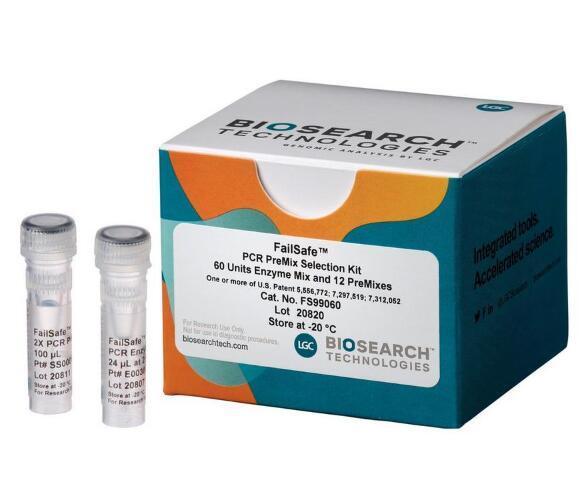 首页>
生物试剂
首页>
生物试剂
商家描述
产品评价(0)
Product information
Ribonuclease R (RNase R) from E. coli is a magnesium-dependent 3′→ 5′ exoribonuclease that digests linear RNAs. RNase R does not digest lariat or circular RNA structures.1,2 Most cellular RNAs will be digested completely, except for tRNAs, 5S RNA, and intron lariats.
Lariats are produced during pre-mRNA splicing of intron regions (Figure1) and the 3´ tails will be trimmed by RNase R to the branch point nucleotide, where there is a 2´,5´-phosphodiester linkage.
RNase R Applications:
Removal of precursor linear RNA after circularisation of RNA for enhanced protein production
Alternative splicing studies
Gene expression studies
Intron cDNA production
Intronic screening of cDNA libraries
Isolation of splicing intermediates and lariats
Figure 1. Schematic overview showing processing of intron lariats by RNase R.
RNase R is also used in the identification of circular RNA for producing therapeutics and identifying certain viral mechanisms.3,4 CircRNA has been referred to as the “new generation of mRNA therapy” and can be confirmed and validated for further analysis and sequencing using RNase R treatment.3,4 RNase R treatment is also used in identifying RNase R resistant circRNA and to enrich circRNA by selective degradation of linear RNAs.5,6
References
Suzuki, H. et al. (2006) Nucleic Acids Res. 34, 63.
Vincent, H.A. and Deutscher, M. P. (2006) J. Biol. Chem. 281, 29769.
Chen, C., et al. (2022). bioRxiv, 2022-05.
Chasseur, A. S., et al. (2022). J. Virol, 96(9), e00321-22.
Chen, R., Wang, S.K., Belk, J.A. et al. (2022). Nat Biotechnol 41, 262–272.
Breuer J, Barth P, Noe Y, et al. (2022). Mol. Ther. Nucleic Acids, 28, 623-635.
Note: RNase R requires low (0.1-1.0 mM) magnesium concentrations for activity. Low EDTA concentrations in substrate RNA solutions can negatively affect RNase R activity. Additional MgCl2 up to 1 mM final concentration can be used to compensate for EDTA in the substrate. Optimal activity is at 37 °C
Product specifications and usage
Concentration: 20 U/ μL
Unit Definition: One unit of RNase R converts 1 µg of poly(A) into acid-soluble nucleotides in 10 minutes at 37 °C under standard assay conditions.
Ribonuclease R (RNase R) from E. coli is a magnesium-dependent 3′→ 5′ exoribonuclease that digests linear RNAs. RNase R does not digest lariat or circular RNA structures.1,2 Most cellular RNAs will be digested completely, except for tRNAs, 5S RNA, and intron lariats.
Lariats are produced during pre-mRNA splicing of intron regions (Figure1) and the 3´ tails will be trimmed by RNase R to the branch point nucleotide, where there is a 2´,5´-phosphodiester linkage.
RNase R Applications:
Removal of precursor linear RNA after circularisation of RNA for enhanced protein production
Alternative splicing studies
Gene expression studies
Intron cDNA production
Intronic screening of cDNA libraries
Isolation of splicing intermediates and lariats
Figure 1. Schematic overview showing processing of intron lariats by RNase R.
RNase R is also used in the identification of circular RNA for producing therapeutics and identifying certain viral mechanisms.3,4 CircRNA has been referred to as the “new generation of mRNA therapy” and can be confirmed and validated for further analysis and sequencing using RNase R treatment.3,4 RNase R treatment is also used in identifying RNase R resistant circRNA and to enrich circRNA by selective degradation of linear RNAs.5,6
References
Suzuki, H. et al. (2006) Nucleic Acids Res. 34, 63.
Vincent, H.A. and Deutscher, M. P. (2006) J. Biol. Chem. 281, 29769.
Chen, C., et al. (2022). bioRxiv, 2022-05.
Chasseur, A. S., et al. (2022). J. Virol, 96(9), e00321-22.
Chen, R., Wang, S.K., Belk, J.A. et al. (2022). Nat Biotechnol 41, 262–272.
Breuer J, Barth P, Noe Y, et al. (2022). Mol. Ther. Nucleic Acids, 28, 623-635.
Note: RNase R requires low (0.1-1.0 mM) magnesium concentrations for activity. Low EDTA concentrations in substrate RNA solutions can negatively affect RNase R activity. Additional MgCl2 up to 1 mM final concentration can be used to compensate for EDTA in the substrate. Optimal activity is at 37 °C
Product specifications and usage
Concentration: 20 U/ μL
Unit Definition: One unit of RNase R converts 1 µg of poly(A) into acid-soluble nucleotides in 10 minutes at 37 °C under standard assay conditions.
Storage Buffer: RNase R is supplied in a 50% glycerol solution containing 50 mM Tris-HCl (pH 7.5), 100 mM NaCl, 0.1 mM EDTA, 1 mM DTT, and 0.1% Triton® X-100.
RNase R 10X Reaction Buffer: 0.2 M Tris-HCl (pH 8.0), 1 M KCl, and 1 mM MgCl2.
 会员登录
会员登录.getTime()%>)
 购物车()
购物车()

 成功收藏产品
成功收藏产品